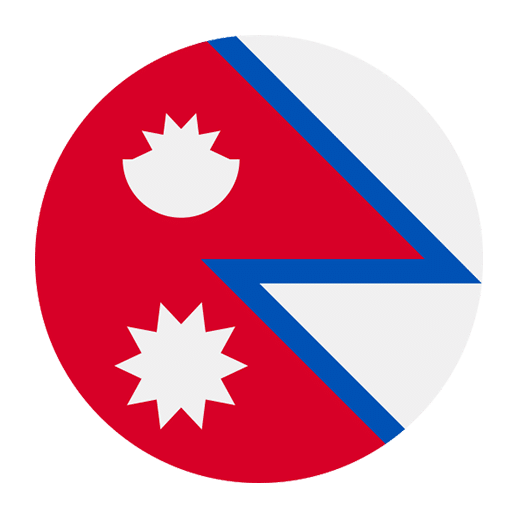Nepali, the official language of Nepal, is a rich and vibrant language spoken by millions of people not just in Nepal but also in parts of India, Bhutan, and Myanmar. As with any language spoken over a diverse geographical area, Nepali exhibits significant regional variations. These variations are not only fascinating but also crucial for language learners who wish to achieve a deeper understanding and fluency in Nepali.
The regional differences in Nepali can be seen in pronunciation, vocabulary, grammar, and even in the cultural contexts in which the language is used. Understanding these variations can help learners better navigate the linguistic landscape of Nepal and improve their communication skills with native speakers from different regions.
Historical Context and Geographic Distribution
Nepali belongs to the Indo-Aryan branch of the Indo-European language family. It evolved from Sanskrit and shares many similarities with Hindi, Bengali, and other languages in the region. The language’s development was heavily influenced by Nepal’s diverse topography, which ranges from the Himalayan mountains in the north to the Terai plains in the south. These geographical features contributed to the formation of distinct linguistic regions within the country.
The major regions where Nepali is spoken include the eastern, central, and western parts of Nepal, each with its own unique characteristics. Additionally, Nepali is spoken by communities in the Indian states of Sikkim and West Bengal, particularly in the Darjeeling district. The diaspora communities in countries like Bhutan and Myanmar also contribute to the linguistic diversity of Nepali.
Pronunciation Variations
Pronunciation is one of the most noticeable aspects of regional variation in Nepali. The way certain sounds are articulated can differ significantly from one region to another.
Eastern Nepali
In the eastern regions of Nepal, such as the areas around Dharan and Ilam, the pronunciation tends to be softer and more melodious. The consonants are often pronounced with less aspiration, and there is a noticeable tendency to elongate vowels. For example, the word “घर” (ghar, meaning house) might be pronounced with a softer ‘gh’ sound and an elongated ‘a.’
Central Nepali
The central region, including the Kathmandu Valley, is considered the linguistic heartland of Nepal. The pronunciation here is often regarded as the standard form of Nepali. The consonants are more aspirated, and the vowels are pronounced clearly and distinctly. This form of Nepali is widely taught in schools and used in media and official communications.
Western Nepali
In the western parts of Nepal, such as Pokhara and the surrounding areas, the pronunciation can be more guttural and harder. Consonants are often pronounced with greater force, and there is a tendency to shorten vowel sounds. For instance, the word “पानी” (paani, meaning water) might be pronounced with a more forceful ‘p’ and a shorter ‘aa’ sound.
Vocabulary Differences
Vocabulary is another area where regional variations are prominent. Different regions have their own unique words and phrases, which can sometimes be confusing for learners.
Eastern Nepali
In the eastern regions, you might encounter words that are influenced by neighboring languages like Bengali and Maithili. For instance, the word “चुरोट” (churot, meaning cigarette) might be replaced with “बिडि” (bidi) in some eastern dialects. Similarly, the word “दुध” (doodh, meaning milk) might be pronounced as “दूध” (dudhh) with a slight variation in intonation.
Central Nepali
In central Nepali, the vocabulary is more standardized and widely understood across different regions. However, even here, you can find words that are unique to the Kathmandu Valley. For example, the word “साइकल” (saikal, meaning bicycle) is more commonly used in central Nepal, while in other regions, “बाइसिकल” (baisikal) might be used.
Western Nepali
In the western regions, you might find words that are influenced by the local languages and dialects. For example, the word “अन्न” (anna, meaning grain) might be replaced with “धान” (dhan) in some western dialects. Similarly, the word “जुता” (juta, meaning shoes) might be pronounced as “जुत्ता” (jutta) with a different accent.
Grammatical Variations
Grammatical structures in Nepali also exhibit regional differences, although these are generally less pronounced than variations in pronunciation and vocabulary.
Eastern Nepali
In eastern Nepali, the sentence structures can sometimes be more complex, with a greater use of conjunctive and disjunctive particles. For example, the sentence “म स्कूल जान्छु” (ma school janchhu, meaning I go to school) might be expressed with additional particles to indicate the time or manner of the action.
Central Nepali
Central Nepali tends to follow more standardized grammatical rules, which are taught in schools and used in official communications. This form of Nepali is generally easier for learners to grasp, as it is more consistent and widely understood.
Western Nepali
In western Nepali, the grammatical structures can be simpler and more direct. For instance, the use of postpositions (similar to prepositions in English) might be less frequent, and sentences might be shorter and more straightforward. This can sometimes make western Nepali easier to understand for beginners.
Cultural Contexts and Usage
Understanding the cultural contexts in which different regional variations of Nepali are used can greatly enhance a learner’s ability to communicate effectively.
Eastern Nepali
In the eastern regions, Nepali is often spoken in a more formal and respectful manner, especially when addressing elders or people of higher social status. This is reflected in the use of honorifics and polite forms of address. For example, the word “तपाईं” (tapaai, meaning you) is used instead of “तिमी” (timi) when speaking to someone respectfully.
Central Nepali
In central Nepal, particularly in the Kathmandu Valley, Nepali is used in a variety of contexts, from formal and official settings to informal and casual conversations. This region’s cultural diversity is reflected in the language, with a mix of traditional and modern influences. Understanding the cultural nuances of central Nepali can help learners navigate different social situations more effectively.
Western Nepali
In the western regions, the use of Nepali can be more relaxed and informal. People in these areas tend to be more straightforward in their communication, and the language reflects this cultural characteristic. Understanding this context can help learners feel more comfortable and confident when interacting with native speakers from western Nepal.
Tips for Learning Regional Variations
For language learners, understanding regional variations in Nepali can be both challenging and rewarding. Here are some tips to help you navigate these differences:
1. Immerse Yourself in the Language: The best way to learn regional variations is to immerse yourself in the language by spending time in different parts of Nepal. This will allow you to experience the language in its natural context and pick up on regional nuances.
2. Listen to Native Speakers: Pay close attention to how native speakers from different regions pronounce words, use vocabulary, and construct sentences. Listening to local radio stations, watching regional TV programs, and engaging in conversations with native speakers can help you develop a better ear for regional variations.
3. Practice with Native Speakers: Practice speaking with native speakers from different regions to improve your fluency and understanding of regional variations. This will also help you become more comfortable with different accents and dialects.
4. Use Language Learning Resources: Utilize language learning resources that focus on regional variations, such as textbooks, online courses, and language exchange programs. These resources can provide valuable insights into the differences between regional dialects and help you develop a more comprehensive understanding of Nepali.
5. Be Open to Learning: Approach learning regional variations with an open mind and a willingness to adapt. Embrace the diversity of the Nepali language and appreciate the unique characteristics of each regional dialect.
Conclusion
Understanding regional variations in Nepali is an essential aspect of mastering the language. By recognizing the differences in pronunciation, vocabulary, grammar, and cultural contexts, language learners can develop a deeper appreciation for the richness and diversity of Nepali. Whether you are a beginner or an advanced learner, embracing these regional variations will enhance your language skills and enable you to communicate more effectively with native speakers from different parts of Nepal. Happy learning!

